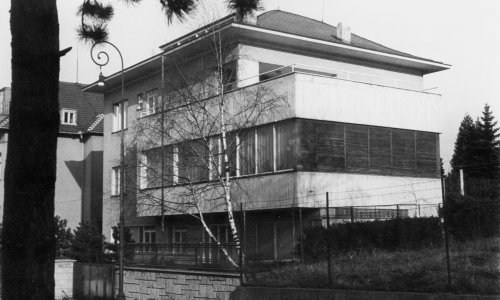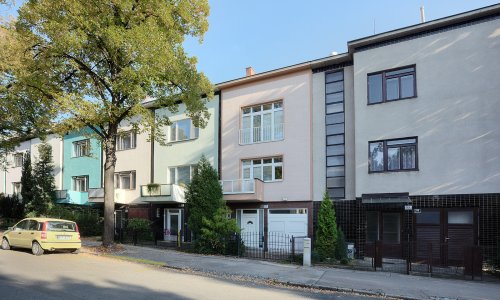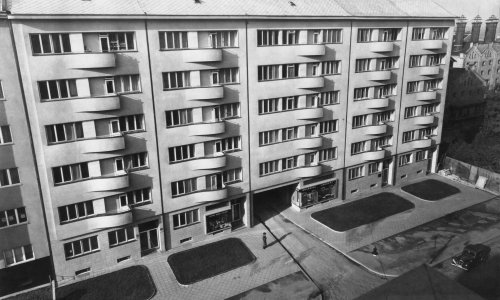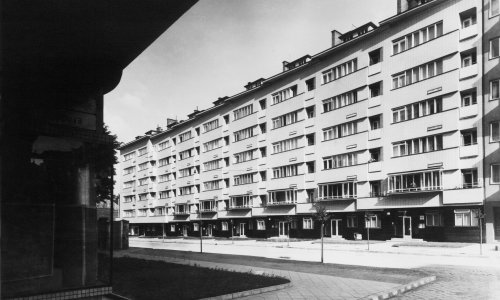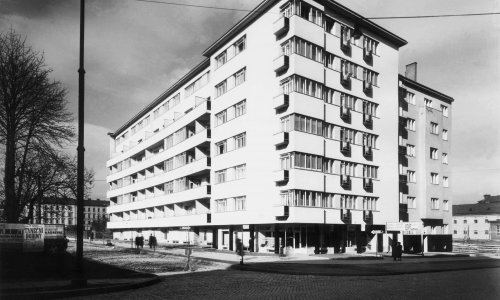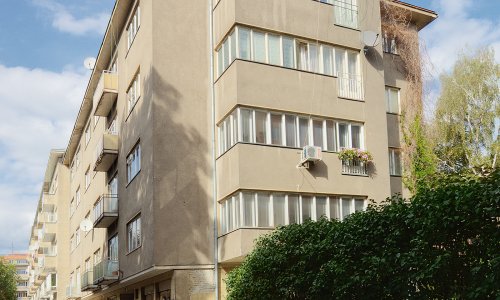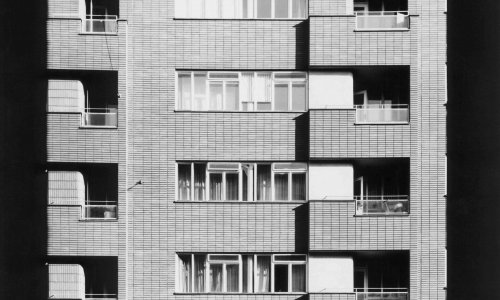Apartment houses by Václav Dvořák towering in the middle of Mendlovo náměstí are the remnants of a block which used to form the urban core of this oldest part of Brno. The block was delimited by Klášterská Street leading towards the Augustinian monastery and the Church of the Assumption of Virgin Mary and connected to Mendlovo náměstí with a park at the site of the current tramway loop. Dvořák's houses likely replaced the original historicist development along the Svratka Millrace, with the Baroque-style Old Brno Town Hall on the opposite bank.
The preserved apartment buildings are an example of the inter-war residential development which emphasized quality materials and subtle details. These involve the protruding window frames whose paint contrasted with the light plaster on the smooth facade. The corner with balconies and corner windows overlooking the area of the former Klášterská Street, whose open ground floor also served the function of a tram stop waiting area, represent intriguing architectural elements.
However, a Brno modernization project in the 1960s involved modifications of Mendlovo náměstí, which included an extensive redevelopment demolishing the Baroque-style town hall and insensitive construction of prefab houses. Due to neglected statics, defects that emerged after the nearby millrace was filled, the house at No. 16 by Václav Dvořák is also threatened by demolition.
Apartment buildings
Name
Apartment buildings
Date
1936 – 1937
Architects
Václav Dvořák stavitel,
Jaroslav Brázda
Trail
Below Špilberk 1918–1945
Code
C146
Type
Apartment building
Address
Mendlovo náměstí 149, 616, 617, 618 / 16–19,
(Staré Brno), Brno, Střed
Public transport
Mendlovo náměstí (TRAM 2, 5, 6)
Mendlovo náměstí (TRAM 1)
Mendlovo náměstí (BUS 52; TROL 37)
Mendlovo náměstí (BUS 44, 82; TROL 25, 26, 35)
GPS
49°11'25.309"N, 16°35'38.711"E
Literature
Petr Pelčák,
Ivan Wahla (eds.),
Václav Dvořák, Vilém a Alois Kuba. Brněnští stavitelé 30. let,
Brno 2002






